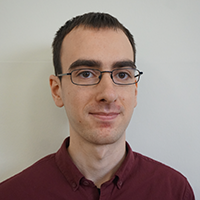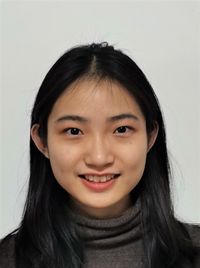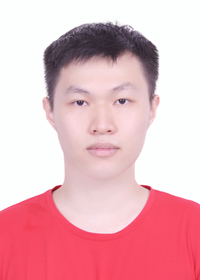Contributors
Nano Electrochemistry Group
Clotilde Cucinotta (PI)
Chris Ahart
Research Associate (postdoc) August 2022 - present.
Dynamical modelling of electrochemical systems under applied potential
Chris is working to enable the dynamical modelling of electrochemical systems under applied potential. This is made possible by through a new interface between the DFT code CP2K and the NEGF code SMEAGOL, developed in collaboration with Dr Sergey Chulkov from the University of Lincoln. Once completed, CP2K+SMEAGOL will be used to unravel fundamental electro-catalytic phenomena at electrified interfaces, such as water splitting, corrosion, and energy storage/conversion.
Frederik
Songyuan
Margherita Buraschi
PhD in Chemistry July 2020-present.
Computational study of electrochemical nanojunctions with open-boundaries description of the electrons.
Margherita is investigating the charge transfer properties of electrochemical nanojunctions (ECNJs) by means of computational studies. ECNJs are three-terminal functional devices of interest for the field of molecular electronics [1] as they present the same functionality of common electronic units but at the molecular scale. Many factors define the conductance of ECNJs; amongst these factors are the structure of the functional unit, the type of metal as well as the EC transformations occurring in solutions. In order to obtain an atomistic understanding of all these factors and their effects on the overall conductance of the junction, ab initio molecular dynamics under bias and an explicit open‐boundary description of the electrons are performed during this project. To this end, the hair-probes formalism [2][3], an open‐boundary formalism suitable to describe multi-terminal EC systems, is being interfaced within the DFT scheme implemented in the CP2K computational package [4].
Rashid Al-Heidous
Zehui Duan
MRes Oct 2020-Sept2021. Using density functional theory (DFT) as implemented in CP2K code, Zehui is investigating the thermodynamics of the CO2 reduction reaction (CO2RR), to guide the rational design for dual-atom catalysts (DAC) with both high efficiency and good selectivity.
Lorraine Wang
MRes Oct 2020-Sept2021. In her MRes project, Lorraine is studying dual-metal-atom catalysts (DAC) by means of density functional theory (DFT) as implemented in CP2K code. Dual-metal-atom catalysts with synergistic effect [5] between the two metal atoms can enhance the catalytic oxygen reduction reaction (ORR). They usually consist of a substrate (doped graphene layers) and anchored metal atoms. Using DFT simulations implemented within the CP2K code can help to build a fundamental understanding of the structure. By studying the thermodynamics of various patterns, we can propose a thermodynamically favourable pathway of DAC synthesis. In the future, the project can further extend to study catalysts phase stability, catalytic performance and kinetics with more complexed models.
Felix
Anthony Liu
MRes Student.
Machine learning potentials for solid-liquid interfaces.
Although accurate, DFT and AIMD calculations can sometimes be time-consuming. Anthony is currently working on using machine learning models to model the electric potential across the platinum-water interface at different electrolyte concentrations.
Chien-Yu Kuo
MRes Student.
Enabling the modelling of the kinetics of electrochemical transformation under potential control with hairy probes formalism
Chien-Yu is co-working with PHD candidate Margherita Buraschi on potential-controlled Pt-water studies based on hairy-probes density functional theory (HP-DFT). The consecutive and better description about the electric double layer could be provided based on this novel development. Eventually, hoping this study could provide a more resonable simulation result for water splitting studies.
Yuhong Ye
MRes Student.
Rationalising the Effect of Electrical Double Layer Structure on the Oxygen Evolution Reaction.
Yuhong is currently conducting research on the specific characteristics of the double layer during oxygen evolution reactions. He is utilizing the DFT code CP2K to investigate the interface between the catalysts and the electrolytes.
Computational Materials Science Group (CMSG)
CMSG is a group of scientiests under Prof. Nicholas Harrison's supervison at Imperial College London.
Nicholas Harrison (PI)
Paolo Restuccia
Huanyu Zhou
Error creating thumbnail: File with dimensions greater than 12.5 MP
PhD in Chemistry 2021-present; MRes Nanomaterials 2020-2021
Huanyu's PhD research project is about the multi-scale modelling of thermodynamics of molecular crystals using ab initio methods. It involves accurate polymorphism prediction and modelling the solvation effects at solid-liquid interfaces of pharmaceutical crystals, which is a joint endeavour with Prof. Jerry Heng's group at the Department of Chemical Engineering.
During his master project co-supervised by Dr. Giuseppe Mallia, Huanyu investigated the monovacancy defect on compressed graphene by DFT. The correlation between magnetic moment and local geometry of monovacacies was identified, which lead to novel electronic and spintronic properties.
Huanyu is also one of the main authors of CRYSTALpytools, the object-oriented python package for CRYSTAL, co-developed by CMSG Imperial and the Theoretical Chemistry Group (TEO) UniTo.
Fei Gao
PhD in Chemistry 2021-present; MRes IMSE 2020-2021
- ↑ Huang et al., Chem. Soc. Rev., 44, 889-901 (2015)
- ↑ Horsfield, Boleininger, D'Agosta, Iyer, Thong, Todorov and White, Phys. Rev. B, 94, 075118 (2016)
- ↑ Zauchner, Horsfield and Todorov, Physical Review B, 97, 045116 (2018)
- ↑ Kühne et al., The Journal of Chemical Physics, 152(19), 194103 (2020)
- ↑ X. Zhu, J. Yan, M. Gu, T. Liu, Y. Dai, Y. Gu and Y. Li, J. Phys. Chem. Lett., 10, 7760–7766 (2019)









